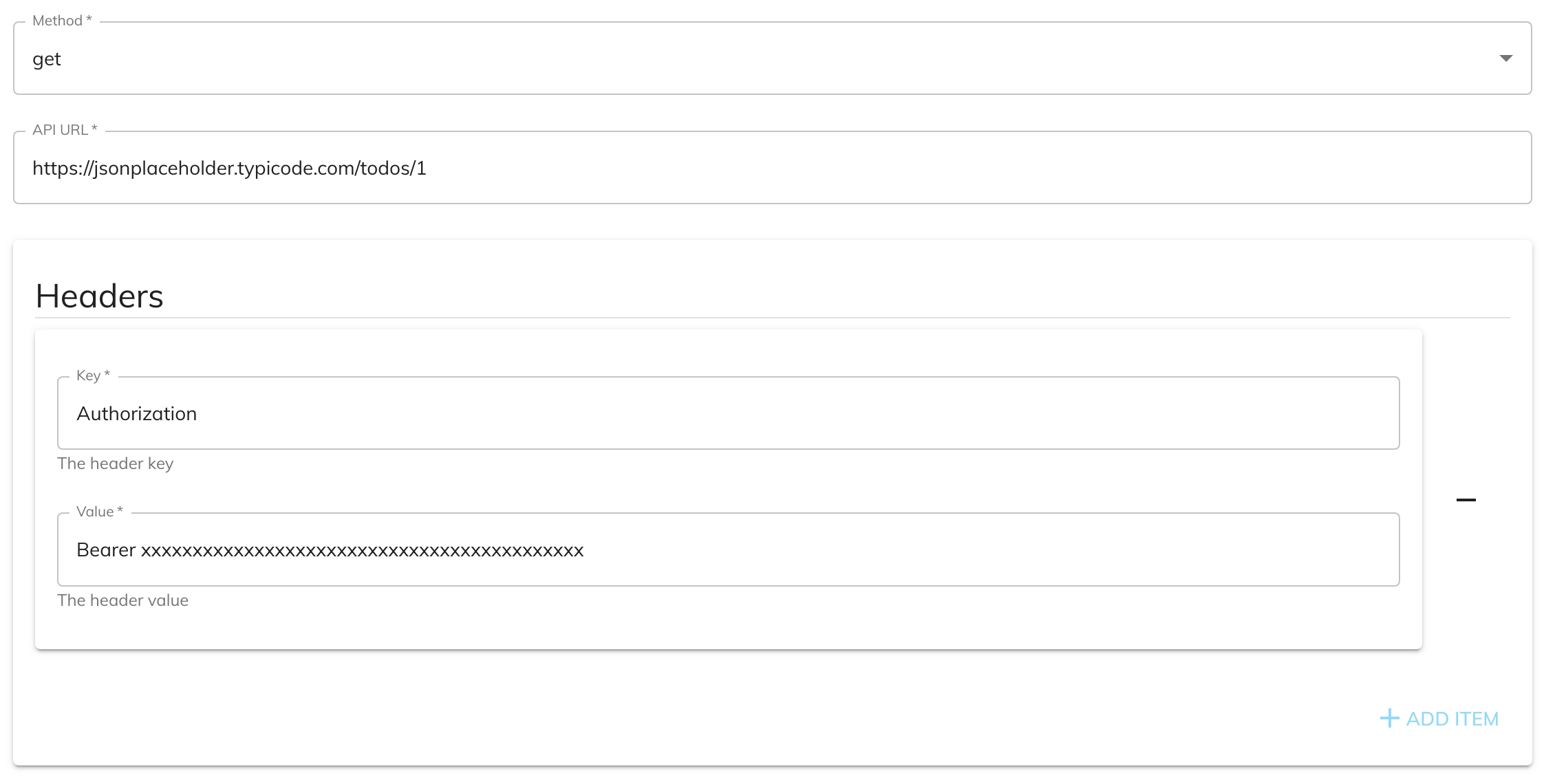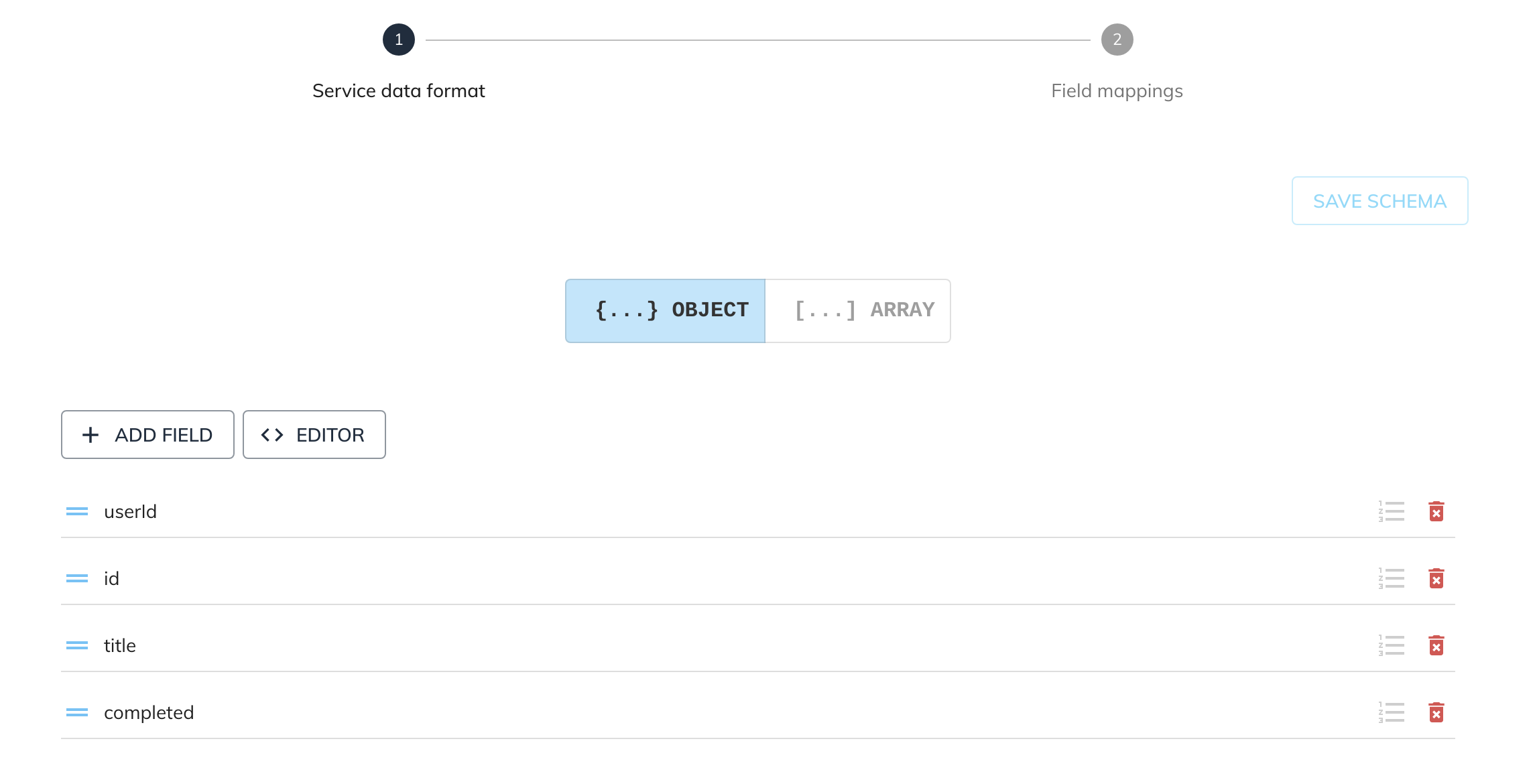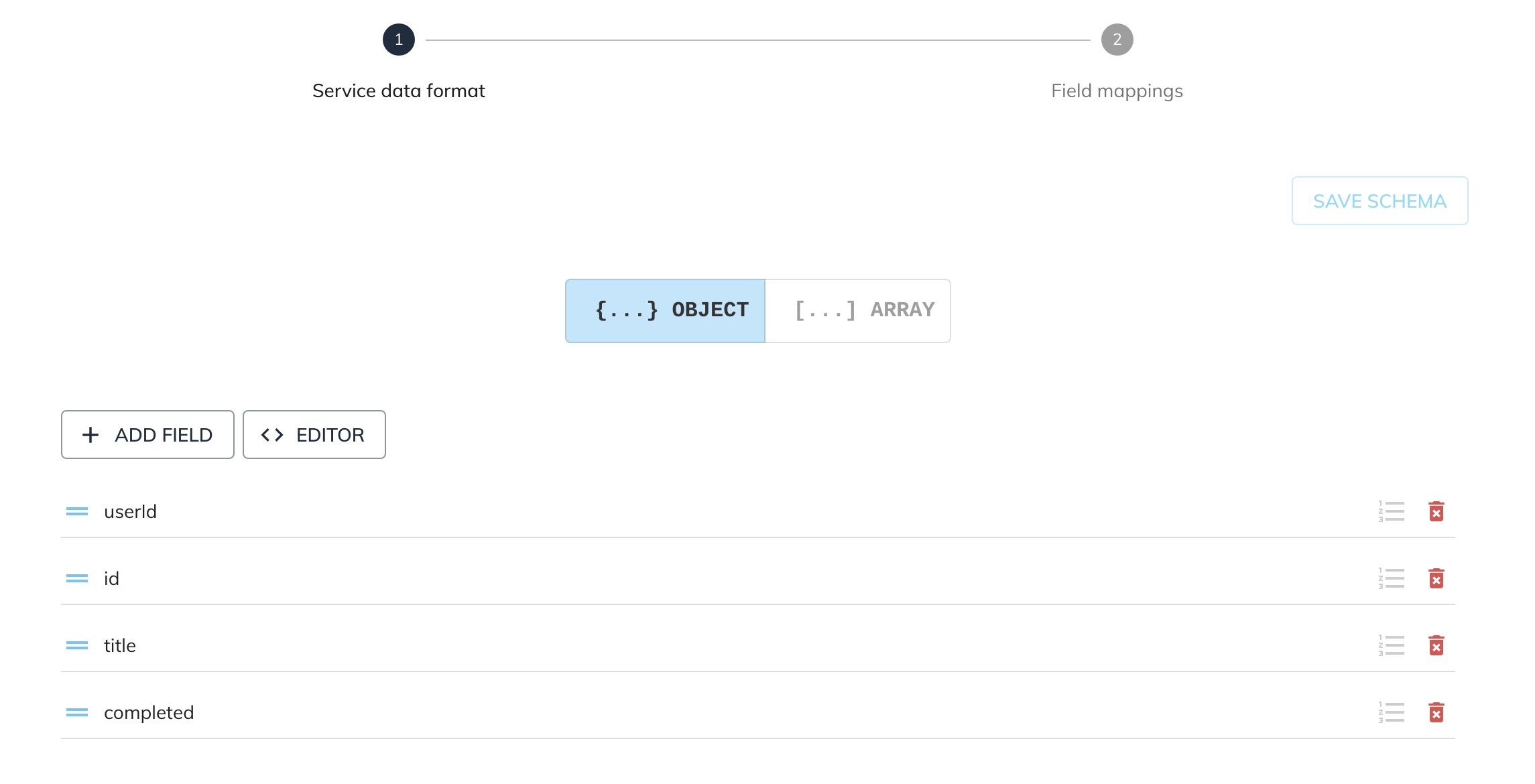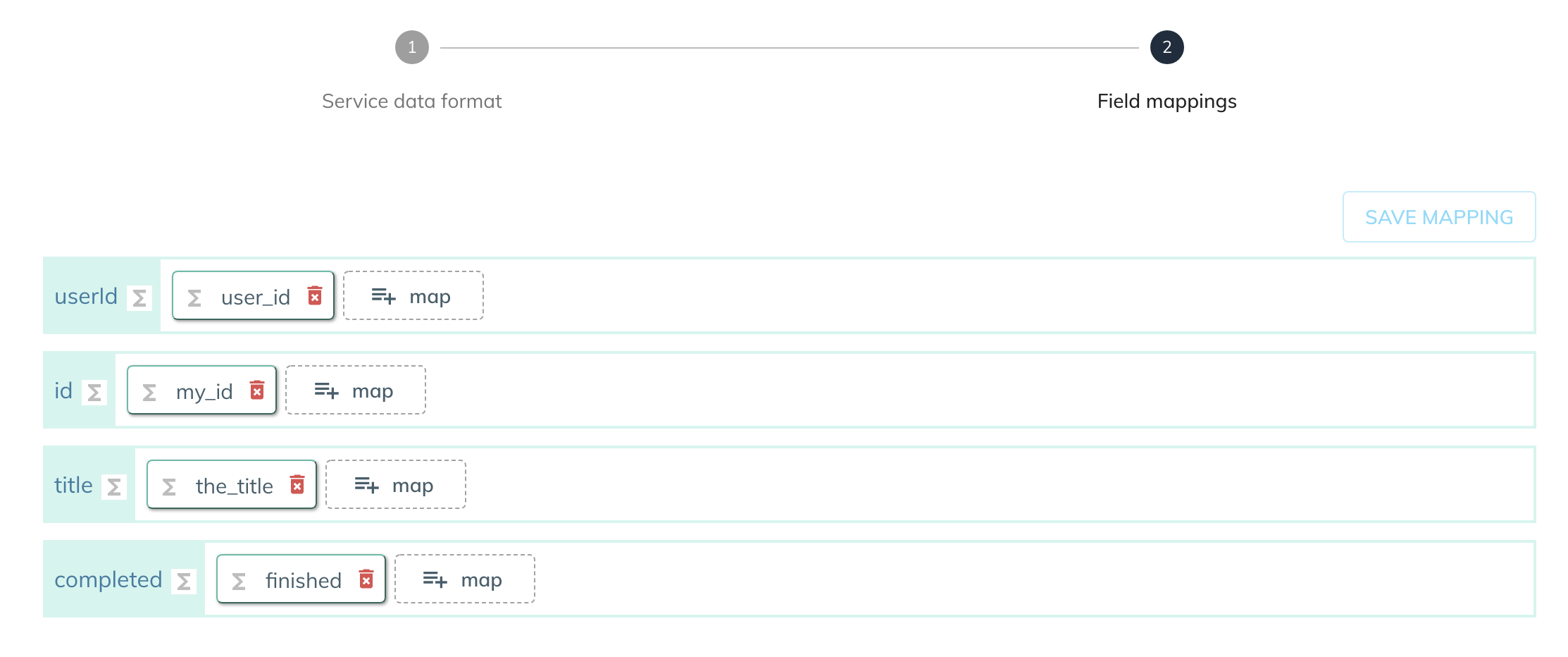REST Service
Before you begin
In order to use the features in this section you need to have an active Spojit account. If you don't have an account you can checkout out the pricing and register here. If you already have an account you can login here.
This is a simple RESTful service that sends HTTP requests using GET, POST, PUT and DELETE methods in JSON format.
Important
This service has a built in JSON parser and will not work with other formats. Requests will automatically contain Content-Type: application/json and Accept: application/json headers.
GET¶
When the GET configuration is selected the service will retrieve a resource from a given URL.
| Option | Description | Default | Required |
|---|---|---|---|
| Method | Select "get" to retrieve a resource. | - | TRUE |
| API Url | The full URL of the resource . | - | TRUE |
| Headers | The request headers are not required as a request can be made without them. If added the Header Key and Header Value is required for each. | - | FALSE |
| Header Key | The name of the header key. | - | TRUE |
| Header Value | The value of the header. | - | TRUE |
Example configuration and mapping
The following example shows you how to configure the Rest Service to get data from a resource. It also contains an example header for an OAuth authorization bearer token.

The GET method doesn't require any service data setup.
POST¶
When the POST configuration is selected the service will create a resource at a given location.
| Option | Description | Default | Required |
|---|---|---|---|
| Method | Select "post" to create a resource. | - | TRUE |
| API Url | The full URL of the resource . | - | TRUE |
| Headers | The request headers are not required as a request can be made without them. If added the Header Key and Header Value is required for each. | - | FALSE |
| Header Key | The name of the header key. | - | TRUE |
| Header Value | The value of the header. | - | TRUE |
Example configuration and mapping
The following example shows you how to configure the Rest Service to create a resource.

The schema can be whatever the resource excepts and for this example we are going to create an OBJECT schema with the specified fields:

Given the following source data from another service:
We can map the applicable fields with the schema object:

PUT¶
When the PUT configuration is selected the service will update a resource at a given location.
| Option | Description | Default | Required |
|---|---|---|---|
| Method | Select "put" to update a resource. | - | TRUE |
| API Url | The full URL of the resource . | - | TRUE |
| Headers | The request headers are not required as a request can be made without them. If added the Header Key and Header Value is required for each. | - | FALSE |
| Header Key | The name of the header key. | - | TRUE |
| Header Value | The value of the header. | - | TRUE |
Example configuration and mapping
The following example shows you how to configure the Rest Service to update a resource.

The schema can be whatever the resource excepts and for this example we are going to create an OBJECT schema with the specified fields:

Given the following source data from another service:
We can map the applicable fields with the schema object:

DELETE¶
When the DELETE configuration is selected the service will delete a resource from a given URL.
| Option | Description | Default | Required |
|---|---|---|---|
| Method | Select "delete" to delete a resource. | - | TRUE |
| API Url | The full URL of the resource . | - | TRUE |
| Headers | The request headers are not required as a request can be made without them. If added the Header Key and Header Value is required for each. | - | FALSE |
| Header Key | The name of the header key. | - | TRUE |
| Header Value | The value of the header. | - | TRUE |
Example configuration and mapping
The following example shows you how to configure the Rest Service to delete a resource:

The DELETE method doesn't require any service data setup.